What is a digital camera and how to choose one?
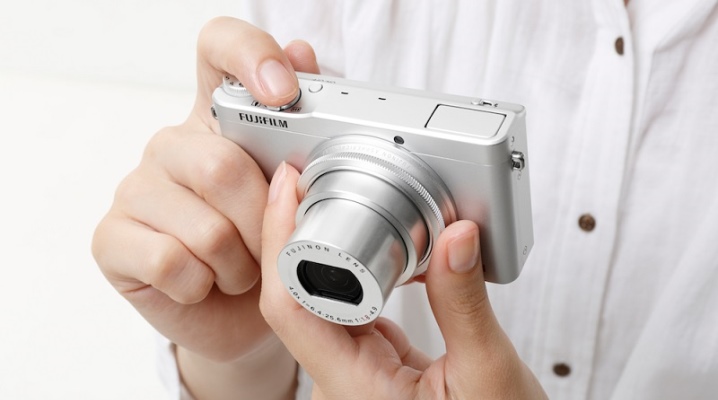
The digital camera has long ceased to be a curiosity. Today this device is in almost every home. The assortment of modern high-quality cameras is huge - a buyer with any requirements and financial capabilities can choose the ideal option. In this article, we will take a closer look at a similar technique and learn how to choose it correctly.

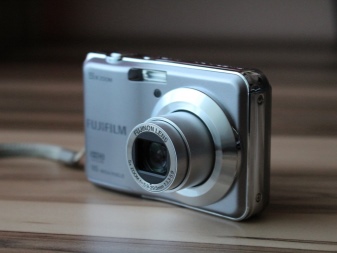
What it is?
First you need to understand what a digital camera is. This is an apparatus in which a photoelectric principle of operation is used to enter certain information (record an image). In this case, light pulses are converted into electrical signals using a semiconductor photo matrix. Subsequently, the electrical signals are converted into digital data.
Modern models of digital cameras are presented in the widest range. Each consumer has the opportunity to find a model that will meet all his requirements and wishes.
In the operation of the device, simple and clear rules are laid down - everyone can cope with them.
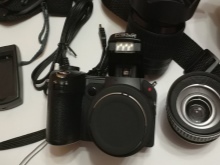

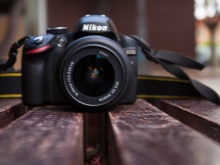
History
Nowadays, everyone is familiar with digital cameras and knows how to use them. But not everyone is aware of how this technique appeared. For the first time, equipment designed to work without special film was developed in 1975 by Eastman Kodak specialist Stephen Sasson. The new equipment uses a special CCD-matrix with a resolution of 0.01 megapixels. The data were recorded on a separate compact cassette. Before advanced digital cameras went on sale, there were video cameras with rich functionality.
This technique consisted of special video cameras designed for recording. With the help of these devices, static images were recorded on video diskettes or videotapes. The predecessor of the first video camera (Sony Mavica) was a device invented in 1981. The quality parameters of the image of this technique were limited by TV standards. There was an analog recording method, which ultimately led to the integration of distortions during the processing of the "picture". The final implementation of electronic photography could only be obtained from the moment of the widespread introduction of current achievements in digital technologies.
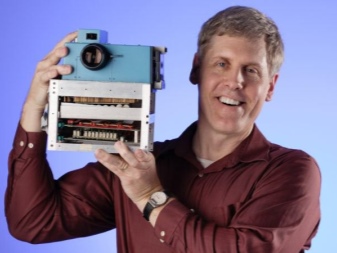
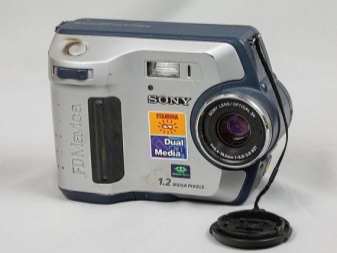
The first model of a high-quality digital device, designed for the purchase of an average consumer, appeared in 1988. It was a Fuji DS-1P machine. The device was used for recording on a special Sram card, which was of a removable type. That same year, Kodak manufactured a launching DSLR device called the Electro-Optic Camera. The work of the technician was based on the characteristics of the Canon New F-1 small format apparatus.
Subsequently, the modernization and improvement of such equipment did not lead to the complete replacement of analog-type devices. People continued to resort to chemical development of photographs. Some variants of modern digital equipment have been used in a limited manner and are usually very expensive.
Most often, journalists and correspondents used this technique in their professional activities.
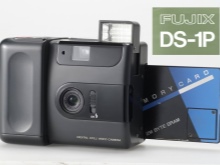
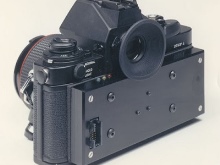
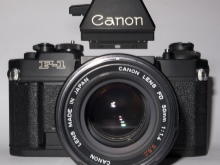
The real change in trends in photographic technology took place at a time when computers and digital technologies began to spread, thanks to which it was possible to obtain "pictures" of excellent quality. Technologies for the production of photomatrixes were updated, which led to a drop in prices for the corresponding equipment. Gradually, digital technology replaced the usual film products, since new devices made it possible to obtain a better, brighter and more detailed picture. At the same time, there was no need to separately learn how to work with digital devices - it was not difficult to understand their work.
The emergence of high-quality LCD displays in digital units also played a role. In addition, using these devices, users were able to send the captured frames on the Internet, or post them in various social networks on their personal pages.
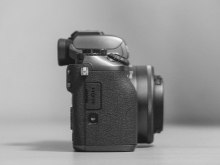
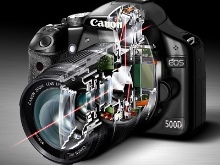
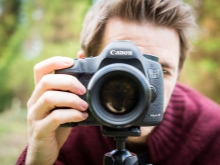
Device and principle of operation
The basic principle of operation of the cameras in question is not much different from simple analog devices. The devices are also based on a special opaque camera. On one of its sides a lens is fixed, which builds a real image of objects on the basis of the focal principle. The exposure is controlled by the lens aperture.
A viewfinder is also present in the devices. This component is provided here for focusing and framing. Distinctive properties lie only in the fact that instead of photographic materials, a special semiconductor-type matrix is installed in the focal plane of the lens. It is she who is responsible for the "transformation" of light into electrical signals. The latter, with the help of an ADC (analog-to-digital converter), are converted into digital files, which are transferred to the buffer memory. Then they are sent to storage on an internal or external media.
In most cases, images are saved on 1 or 2 flash cards, connectors for which are present on the equipment case.
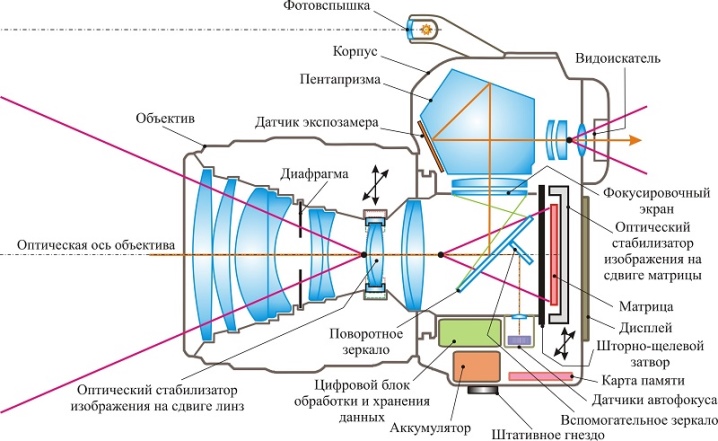
Source files that can be outputted by a RAW ADC can be convertedusing the camera's processor into one of the current formats, for example, Jpeg or Tiff. In this case, the source can also be saved, for further transformations and processing by the user himself, using a personal computer or laptop.
There is no photographic material in these devices. In digital devices, you do not need to use film or special cassette. The main device is assembled from electronic elements, the arrangement of which turns out to be more flexible and thoughtful than in the situation with standard mechanical units. Due to such features of the device, it becomes possible to arrange all the components more freely and practically, which does not in any way affect the mechanical connections and other important components of the equipment. In the early stages of the development of technology without the use of film, many ways were undertaken to form completely new ergonomics, which would be as comfortable as possible for the photographer. But, in the end, the layout and design of the camera, proven over many years of operation, began to be used in new digital units.


Matrices of digital devices of all types are flat. At the same time, the equipment is equipped with lenses that build a truly high-quality image.
In 2014, the famous Japanese brand Sony released a curious model with a concave matrix.... Later, other popular companies, for example, Canon and Nikon, turned to the same developments. In 2017, similar matrices began to be used by Microsoft. These components require completely different lenses with a thicker structure. The result is more compact photographic equipment with fewer optics and fewer lenses. In modern models of digital devices, the same control elements are present as in analog versions familiar to many. The autofocus system and its adjustments are the same as those used in older cameras. At the same time, the interface is practically indistinguishable from the latest analog devices.
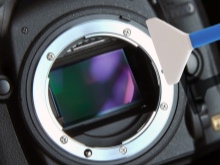
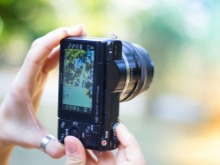
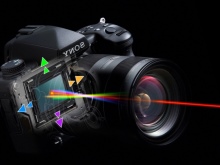
In devices of amateur and semi-professional categories, one more disk is additionally installed, which is responsible for switching specific camera modes. Thanks to this, the user has the opportunity to adjust the algorithms for working with exposure, if desired. In digital products, you can also adjust the light sensitivity level, file extension size and type, white balance, color space, and other useful characteristics. All of these options can be adjusted by selecting certain menu items.
Some of the state-of-the-art and high-tech camera options can be controlled using a dedicated app pre-installed on the smartphone. In the current "digital cameras" can be used different subspecies of sighting devices used in analog technology. More sophisticated and popular at the moment are high-quality mirror varieties.
Often, devices also have a special electronic viewfinder, which is in no way inferior to a mirror analogue, but it is made more compact.
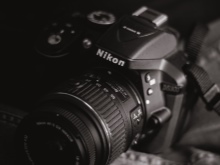

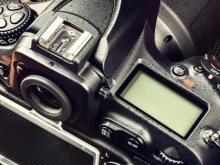
Classification
Nowadays, there are many varieties of popular cameras of this type, which show users the excellent quality of bright and colorful images. If you decide to purchase the specified device for yourself, you should know exactly what the main properties and distinctive characteristics of different types of equipment are. Let's get to know them better.
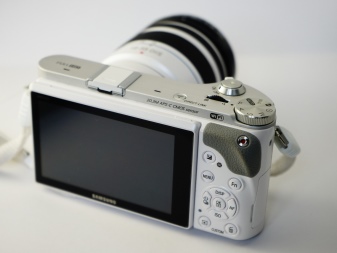
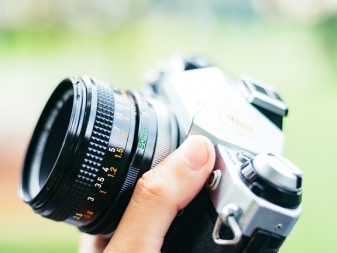
Mirrored
Modern SLR cameras are very popular today. The equipment is equipped with a viewfinder based on a mirror. On sale, the buyer can find 2 objective and 1 objective mirror devices. In them, the mirror is fixed at an angle of 45 degrees, due to which it becomes possible to see the real image in the viewfinder. The light that breaks through the lens of the technique is reflected due to the mirror component, and then redirected upward, where it enters the pentamirror. It is the latter that orients the image as needed.
DSLR cameras often have an optional black and white display. Basically, this component is provided in professional devices, where most often the most convenient access to all buttons and other controls is realized. The main advantage of modern DSLRs is their rich functionality and wide capabilities. Using such equipment, the user can get better quality and more attractive images. With the right handling, it is possible to make frames in which there are no unnecessary "noise" and distortion.
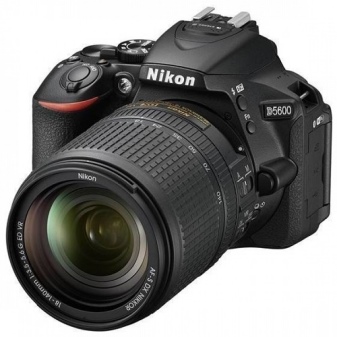

Having a DSLR in the arsenal, the user can additionally purchase more powerful lenses for it. The other primary advantages of such devices include the following:
- large range of ISO values;
- sharpness quality;
- long working time;
- excellent focusing.
Of the minuses, the following are noted:
- high cost of many devices;
- not very convenient process of changing lenses.
- Mirrorless
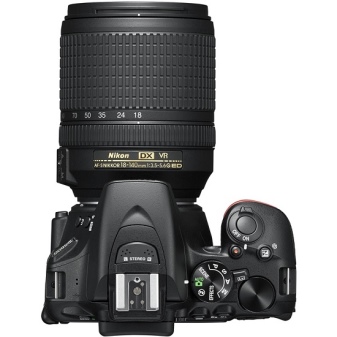
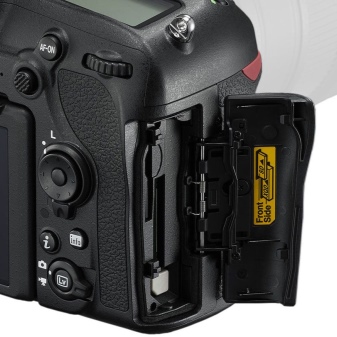
These are digital cameras that do not have a built-in viewfinder. They have a high quality electronic sighting device. Using such a device, you can replace the lens. They provide for almost complete consistency.
The name "mirrorless" means that this technique does not have a path with a mirror, but this does not affect the functional content of the equipment. There are a lot of devices of this type on sale today. Let's analyze their main positive qualities.
- They are usually compact and lightweight.
- In the operation of mirrorless technology, users are not faced with the influence of unnecessary noise or vibration. During shooting, they do not shake, so you can more easily get beautiful and clear shots, even if a person is in difficult conditions. The presence of an electronic shutter is distinguished by a completely silent operation.
- The devices provide a higher shooting speed due to the presence of an electronic shutter and the absence of a mirror part in the design.
- There is a hybrid auto focus system. Such equipment is available in the latest models of high-quality mirrorless cameras.
- Real-time preview is possible. The user can see the finished image even before the frame is taken by the device.
- There is an electronic viewfinder, which has higher functionality when compared to the optical one. It displays more information (usually in the form of numbers showing indicators of white balance, depth, image sharpness and other properties).
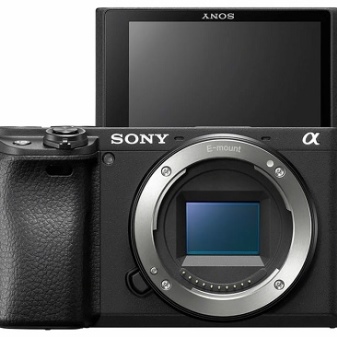
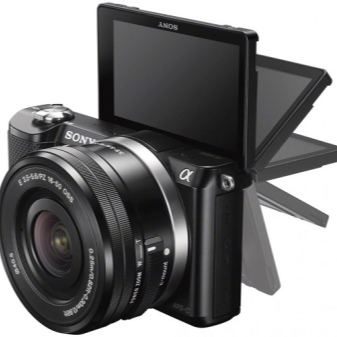
Rangefinder
Rangefinder cameras are considered the "workhorses" of street photographers. In such devices, there are special optical rangefinder and viewfinder systems separate from the lens. The equipment uses the parallax effect.
Usually, the viewfinder and rangefinder schemes are combined into one, due to which it is possible to simultaneously carry out both framing and focusing.
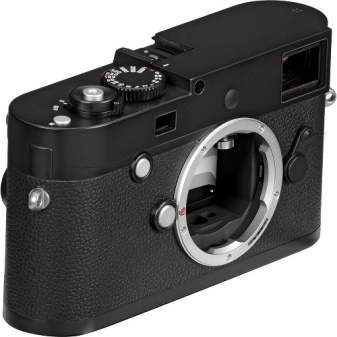

Ultrasights
In recent years, the so-called ultrazoom cameras have become very popular. This is digital equipment, which is equipped with a non-interchangeable type lens with a high zoom ratio (usually at least x25). The lens zoom is the focal length that can be changed. Zoom ratio is the ratio between the longest focal length of the lens and its minimum values.
Ultrazoom is good because when using them, the user seems to refuse to use several separate lenses at once. - all components are combined in one device. They are versatile and suitable for all types of filming. With the help of ultrazoom, you can effectively shoot footage not only with the image of the moon in the sky, but also a small ant in the grass.
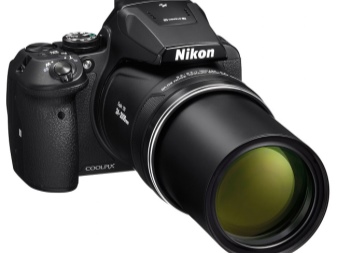
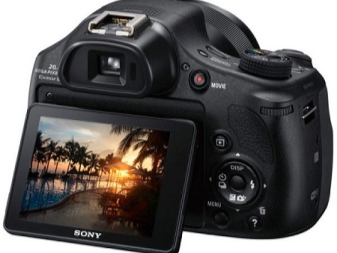
Compact
In our time, fashionable and most convenient compact models of digital cameras are in great demand. Such equipment is produced by many well-known brands, regularly delighting consumers with more and more new items with rich functionality and ultra-modern design performance. Compact cameras are very convenient to use and carry with you. To carry them, you do not need to pick up huge bags or allocate a lot of free space in a lady's accessory. Their weight is very small, so it is easy and comfortable to work with them.
Compact technology is very relevant and in demand, but it does not always demonstrate the high quality of the images taken. Many devices take good shots, but they lack high detail and light sensitivity.
In order not to be mistaken with the choice of this equipment, the buyer should be more careful.

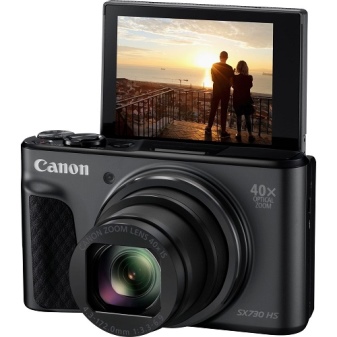
Modular
Cameras with removable lenses, which are combined using a shutter and a photo sensor in a single modular component. The product body always contains a high-quality viewfinder, informative LCD display, control components, and a battery. For the first time, a device of this type was used relatively recently - in 1996 (model Minolta Dimage V). Further, this equipment was developed in popular series devices - EX1500 and 3D 1500.
The modular principle of operation of such devices has found application in modern smartphones from many well-known brands. In the body of these widespread gadgets, a lens with a matrix is assembled, and in many cases a flash card with a battery, but a viewfinder is not provided. In the role of the last element, the smartphone display is used (it is to it that the device is attached). Data transfer takes place thanks to the Wi-Fi and NFC protocols.

Built-in
The functionality of the first built-in cameras was not the richest. With their help, it was possible to get good pictures only in sufficient lighting conditions. A little later (since 2010), built-in devices “stepped forward in development” and in terms of image quality began to be like compact digital cameras. There are also such units that shoot higher quality, widescreen and medium format "pictures" (for example, in 4K resolution).

Action cameras and photo traps
This is a category of digital photographic equipment that is suitable for shooting still images. Often such devices are used for filming in extreme conditions or when it is possible to do without human participation at all. Mostly, These devices are manufactured with durable shock-resistant cases that are not afraid of moisture and dampness. They usually don't have a viewfinder.
Camera traps work longer offline than action cameras. They are more sensitive. Shooting in them is often started using a special motion sensor.
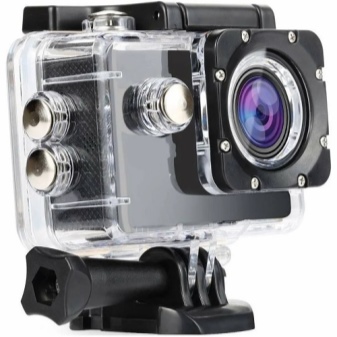
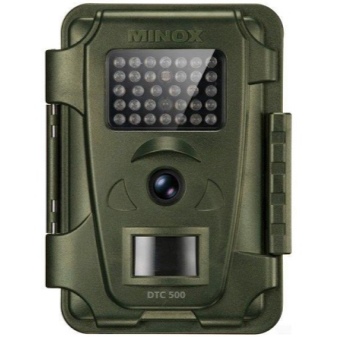
Light field cameras
Experimental devices, presented in single copies (more often these are concepts). They fix only the light field, and do not distribute the illumination on the matrix. Due to this, focus can occur after the end of shooting on the finished file.
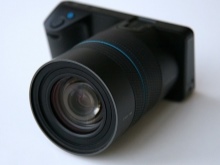
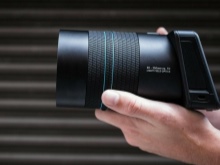
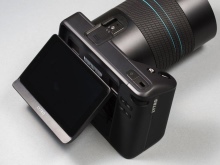
How to choose?
Let's take a look at how to find the right high quality digital camera.
- Goals. Decide on the purpose of the purchase. If you need professional or semi-professional equipment for work, then it is better to choose a DSLR or mirrorless from a well-known brand. If you do not have special requirements for technology, you can buy a compact model. All other types are suitable only for simple amateur use, as well as for extreme recreation. Before buying, decide in what conditions you will use the devices.
- Specifications. Find out all about the technical parameters of your camera. Pay attention to all the values and properties listed in the accompanying documentation (it is better to study all the data in it, and not just listen to the stories of the sales assistant).
- Convenience. Make sure that it will be easy and convenient for you to use the equipment. It shouldn't seem too heavy to you, not ergonomic.
- Build quality. Inspect the gadget for damage and defects before purchasing. It is advisable to check the operation of the camera (of any type) in the store, if possible. If you have given time for a home check, do not waste your time - during the given time, test all the options and functions of the equipment, relying on the instruction manual.
- Brand. Try to buy only high quality branded digital cameras. The branded technology looks better and has a more "conscientious" build quality. Such devices are always sold accompanied with a warranty card and are designed for a long service life.
For the purchase of "your" digital camera, go to a trusted store (a large networker or a specialized, narrowly targeted retail outlet). Only here you will find original equipment with a manufacturer's warranty.
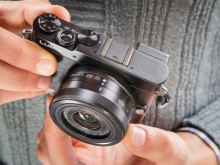
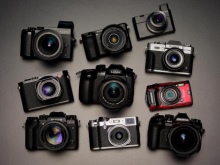
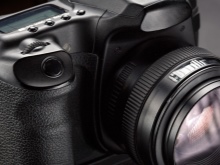
For information on how to choose the right digital camera, see the next video.













The comment was sent successfully.